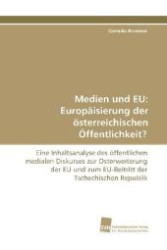- ホーム
- > 洋書
- > 英文書
- > Science / Mathematics
Full Description
Global Climate Change and Terrestrial Invertebrates
Invertebrates perform such vital roles in global ecosystems—and so strongly influence human wellbeing—that biologist E.O. Wilson was prompted to describe them as "little things that run the world." As they are such powerful shapers of the world around us, their response to global climate change is also pivotal in meeting myriad challenges looming on the horizon—everything from food security and biodiversity to human disease control.
This book presents a comprehensive overview of the latest scientific knowledge and contemporary theory relating to global climate change and terrestrial invertebrates. Featuring contributions from top international experts, this book explores how changes to invertebrate populations will affect human decision making processes across a number of crucial issues, including agriculture, disease control, conservation planning, and resource allocation. Topics covered include methodologies and approaches to predict invertebrate responses, outcomes for disease vectors and ecosystem service providers, underlying mechanisms for community level responses to global climate change, evolutionary consequences and likely effects on interactions among organisms, and many more. Timely and thought-provoking, Global Climate Change and Terrestrial Invertebrates offers illuminating insights into the profound influence the simplest of organisms may have on the very future of our fragile world.
Contents
List of Contributors xiii
Preface xvii
1 Introduction to Global Climate Change and Terrestrial Invertebrates 1
Scott N. Johnson and T. Hefin Jones
1.1 Background 1
1.2 Predictions for Climate and Atmospheric Change 2
1.3 General Mechanisms for Climate Change Impacts on Invertebrates 2
1.4 Themes of the Book 4
Acknowledgements 7
References 7
Part I Methods for Studying Invertebrates and Climate Change 9
2 Using Historical Data for Studying Range Changes 11
Georgina Palmer and Jane K. Hill
Summary 11
2.1 Introduction 11
2.2 Review of Historical Data Sets on Species' Distributions 13
2.3 Methods for Using Historical Data to Estimate Species' Range Changes 15
2.4 Challenges and Biases in Historical Data 19
2.5 New Ways of Analysing Data and Future Perspectives 23
Acknowledgements 24
References 24
3 Experimental Approaches for Assessing Invertebrate Responses to Global Change Factors 30
Richard L. Lindroth and Kenneth F. Raffa
Summary 30
3.1 Introduction 30
3.2 Experimental Scale: Reductionist, Holistic and Integrated Approaches 32
3.3 Experimental Design: Statistical Concerns 33
3.4 Experimental Endpoints: Match Metrics to Systems 35
3.5 Experimental Systems: Manipulations From Bottle to Field 36
3.6 Team Science: the Human Dimension 40
3.7 Conclusions 41
Acknowledgements 42
References 42
4 Transplant Experiments - a Powerful Method to Study Climate Change Impacts 46
Sabine S. Nooten and Nigel R. Andrew
Summary 46
4.1 Global Climate Change 46
4.2 Climate Change Impacts on Species 47
4.3 Climate Change Impacts on Communities 48
4.4 Common Approaches to Study Climate Change Impacts 48
4.5 Transplant Experiments - a Powerful Tool to Study Climate Change 49
4.6 Transplant Experiment Trends Using Network Analysis 57
4.7 What's Missing in Our Current Approaches? Next Steps for Implementing Transplant Experiments 60
Acknowledgements 62
References 62
Part II Friends and Foes: Ecosystem Service Providers and Vectors of Disease 69
5 Insect Pollinators and Climate Change 71
Jessica R. K. Forrest
Summary 71
5.1 Introduction 71
5.2 The Pattern: Pollinator Populations and Climate Change 72
5.3 TheProcess: Direct Effects of Climate Change 76
5.4 The Process: Indirect Effects of Climate Change 81
5.5 Synthesis, and the View Ahead 83
Acknowledgements 84
References 84
6 Climate Change Effects on Biological Control in Grasslands 92
Philippa J. Gerard and Alison J. Popay
Summary 92
6.1 Introduction 92
6.2 Changes in Plant Biodiversity 94
6.3 Multitrophic Interactions and Food Webs 94
6.4 Greater Exposure to Extreme Events 102
6.5 Range Changes 103
6.6 Greater Exposure to Pest Outbreaks 104
6.7 Non-Target Impacts 104
6.8 Conclusion 105
Acknowledgements 105
References 105
7 Climate Change and Arthropod Ectoparasites and Vectors of Veterinary Importance 111
Hannah Rose Vineer, Lauren Ellse and Richard Wall
Summary 111
7.1 Introduction 111
7.2 Parasite-Host Interactions 113
7.3 Evidence of the Impacts of Climate on Ectoparasites and Vectors 114
7.4 Impact of Human Behaviour and Husbandry on Ectoparasitism 116
7.5 Farmer Intervention as a Density-Dependent Process 118
7.6 Predicting Future Impacts of Climate Change on Ectoparasites and Vectors 118
Acknowledgements 123
References 123
8 Climate Change and the Biology of Insect Vectors of Human Pathogens 126
Luis Fernando Chaves
Summary 126
8.1 Introduction 126
8.2 Interaction with Pathogens 129
8.3 Physiology, Development and Phenology 131
8.4 Population Dynamics, Life History and Interactions with Other Vector Species 132
8.5 Case Study of Forecasts for Vector Distribution Under Climate Change: The Altitudinal Range of
Aedes albopictus and Aedes japonicus in Nagasaki, Japan 134
8.6 Vector Ecology and Evolution in Changing Environments 138
Acknowledgements 139
References 140
9 Climate and Atmospheric Change Impacts on Aphids as Vectors of Plant Diseases 148
James M. W. Ryalls and Richard Harrington
Summary 148
9.1 The Disease Pyramid 148
9.2 Interactions with the Pyramid 155
9.3 Conclusions and Future Perspectives 162
Acknowledgements 163
References 164
Part III Multi-Trophic Interactions and Invertebrate Communities 177
10 Global Change, Herbivores and Their Natural Enemies 179
William T. Hentley and Ruth N. Wade
Summary 179
10.1 Introduction 180
10.2 Global Climate Change and Insect Herbivores 181
10.3 Global Climate Change and Natural Enemies of Insect Herbivores 185
10.4 Multiple Abiotic Factors 191
10.5 Conclusions 192
Acknowledgements 193
References 193
11 Climate Change in the Underworld: Impacts for Soil-Dwelling Invertebrates 201
Ivan Hiltpold, Scott N. Johnson, Renée-Claire Le Bayon and Uffe N. Nielsen
Summary 201
11.1 Introduction 201
11.2 Effect of Climate Change on Nematodes: Omnipresent Soil Invertebrates 203
11.3 Effect of Climate Change on Insect Root Herbivores, the Grazers of the Dark 207
11.4 Effect of Climate Change on Earthworms: the Crawling Engineers of Soil 212
11.5 Conclusions and Future Perspectives 216
Acknowledgements 217
References 218
12 Impacts of Atmospheric and Precipitation Change on Aboveground-Belowground Invertebrate Interactions 229
Scott N. Johnson, James M.W. Ryalls and Joanna T. Staley
Summary 229
12.1 Introduction 229
12.2 Atmospheric Change - Elevated Carbon Dioxide Concentrations 233
12.4 Conclusions and Future Directions 242
Acknowledgements 245
References 245
13 Forest Invertebrate Communities and Atmospheric Change 252
Sarah L. Facey and Andrew N. Gherlenda
Summary 252
13.1 Why Are Forest Invertebrate Communities Important? 253
13.2 Atmospheric Change and Invertebrates 253
13.3 Responses of Forest Invertebrates to Elevated Carbon Dioxide Concentrations 254
13.4 Responses of Forest Invertebrates to Elevated Ozone Concentrations 263
13.5 Interactions Between Carbon Dioxide and Ozone 265
13.6 Conclusions and Future Directions 267
Acknowledgements 268
References 268
14 Climate Change and Freshwater Invertebrates: Their Role in Reciprocal Freshwater-Terrestrial Resource Fluxes 274
Micael Jonsson and Cristina Canhoto
Summary 274
14.1 Introduction 274
14.2 Climate-Change Effects on Riparian and Shoreline Vegetation 275
14.3 Climate-Change Effects on Runoff of Dissolved Organic Matter 277
14.4 Climate Change Effects on Basal Freshwater Resources Via Modified Terrestrial Inputs 278
14.5 Effects of Altered Terrestrial Resource Fluxes on Freshwater Invertebrates 279
14.6 Direct Effects of Warming on Freshwater Invertebrates 280
14.7 Impacts of Altered Freshwater Invertebrate Emergence on Terrestrial Ecosystems 282
14.8 Conclusions and Research Directions 284
Acknowledgements 286
References 286
15 Climatic Impacts on Invertebrates as Food for Vertebrates 295
Robert J. Thomas, James O. Vafidis and Renata J. Medeiros
Summary 295
15.1 Introduction 295
15.2 Changes in the Abundance of Vertebrates 296
15.3 Changes in the Distribution of Vertebrates 300
15.4 Changes in Phenology of Vertebrates, and Their Invertebrate Prey 303
15.5 Conclusions 307
15.6 Postscript: Beyond the Year 2100 308
Acknowledgements 308
References 308
Part IV Evolution, Intervention and Emerging Perspectives 317
16 Evolutionary Responses of Invertebrates to Global Climate Change: the Role of Life-History Trade-Offs and Multidecadal Climate Shifts 319
Jofre Carnicer, Chris Wheat, Maria Vives, Andreu Ubach, Cristina Domingo, Sören Nylin, Constantí Stefanescu, Roger Vila, Christer Wiklund and Josep Peñuelas
Summary 319
16.1 Introduction 319
16.2 Fundamental Trade-Offs Mediating Invertebrate Evolutionary Responses to Global Warming 327
16.3 The Roles of Multi-Annual Extreme Droughts and Multidecadal Shifts in Drought Regimens in Driving Large-Scale Responses of Insect Populations 333
16.4 Conclusions and New Research Directions 337
Acknowledgements 339
References 339
17 Conservation of Insects in the Face of Global Climate Change 349
Paula Arribas, Pedro Abellán, Josefa Velasco, Andrés Millán and David Sánchez-Fernández
Summary 349
17.1 Introduction 349
17.2 Vulnerability Drivers of Insect Species Under Climate Change 352
17.3 Assessment of Insect Species Vulnerability to Climate Change 353
17.4 Management Strategies for Insect Conservation Under Climate Change 355
17.5 Protected Areas and Climate Change 357
17.6 Perspectives on Insect Conservation Facing Climate Change 359
Acknowledgements 360
References 361
18 Emerging Issues and Future Perspectives for Global Climate Change and Invertebrates 368
Scott N. Johnson and T. Hefin Jones
18.1 Preamble 368
18.2 Multiple Organisms, Asynchrony and Adaptation in Climate Change Studies 368
18.3 Multiple Climatic Factors in Research 369
18.4 Research Into Extreme Climatic Events 371
18.5 Climate change and Invertebrate Biosecurity 372
18.6 Concluding Remarks 374
References 374
Species Index 379
Subject Index 385








